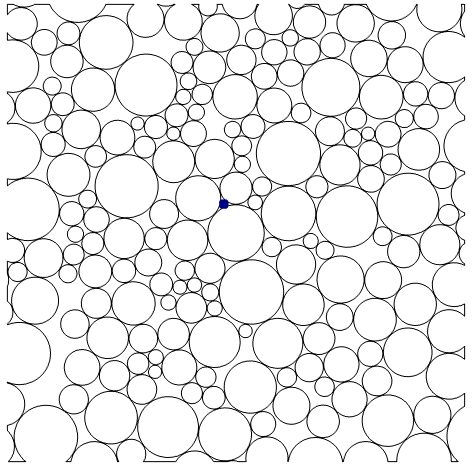Title: Understanding drug delivery and nanoparticles diffusion in brain white matter by numerical simulation
Authors: Tian Yuan & Daniele Dini
Conference: BioMedEng22, 8-10 September 2022, London

Fig: Nanoparticle diffusion process
Introduction Brain disorders, such as Parkinson’s disease, Alzheimer’s disease, and brain tumours, have become an increasing burden to the population health worldwide. Conventional therapies, which are mainly based on intravenous injection, are not ideally placed to deliver drugs into the brain tissue due to the highly selective permeability of the blood-brain barrier. Nanoparticles (NPs) thus have been widely acknowledged as a promising therapy to cure brain diseases as they can be small enough to pass through the BBB. Size and surface modifications are common ways to tailor NPs for BBB penetration, but how these modifications affect NPs’ brain tissue penetration is still not well understood. Methods Mathematical modelling and geometrical reconstruction approaches were adopted in this study. Specifically, a stochastic brain white matter (WM) geometry was built using high-resolution imaging results, based on which a mathematical particle tracing formulation was developed. In this framework, particle-particle, particle-fluid, and particle-axons interactions can be considered. By changing model parameters, such as particle size, surface potential, and geometry configuration, we performed an extensive investigation that allows us to better understand how different factors affect NPs’ diffusion in the brain white matter. Results & Discussion Results show that an increase in both particle size and ζ potential (negatively charged NPs) has a positive effect on NPs’ diffusion in the brain white matter; however, there exits a threshold of particle size, ∼ 90nm, beyond which a further increase of both parameters is seen to cause a negative effect. The main reason for this is that the average gap between axons is about 100 nm. When particle size reaches this level, severe collision between the NPs and the axons’ wall hinders the motion of the NPs, which cannot easily navigate through the relatively narrow gaps. Higher surface potential will further accelerate the NPs’ motion, thus leading to more severe collisions. If the NPs are nearly electroneutral, i.e. |ζ| < 10 mV, and the sizes are below the size threshold, NPs’ diffusion coefficient in brain WM is nearly the same as that in pure interstitial fluid, which means that the microstructure of WM has limited effect on NPs diffusion. Conclusions Electrostatic interactions between negatively charged NPs dominate their diffusion in the brain WM. Although smaller sized NPs have higher ratio of kinetic energy to drag resistance, this influence can be easily overwhelmed by the electrostatic force. For approximately electrically neutral and small-sized NPs, the microstructure of WM also has limited effect on their diffusion coefficient, which means that fluids of similar properties with interstitial fluid may be adopted to test the diffusion properties in the brain of these NPs.
Comments